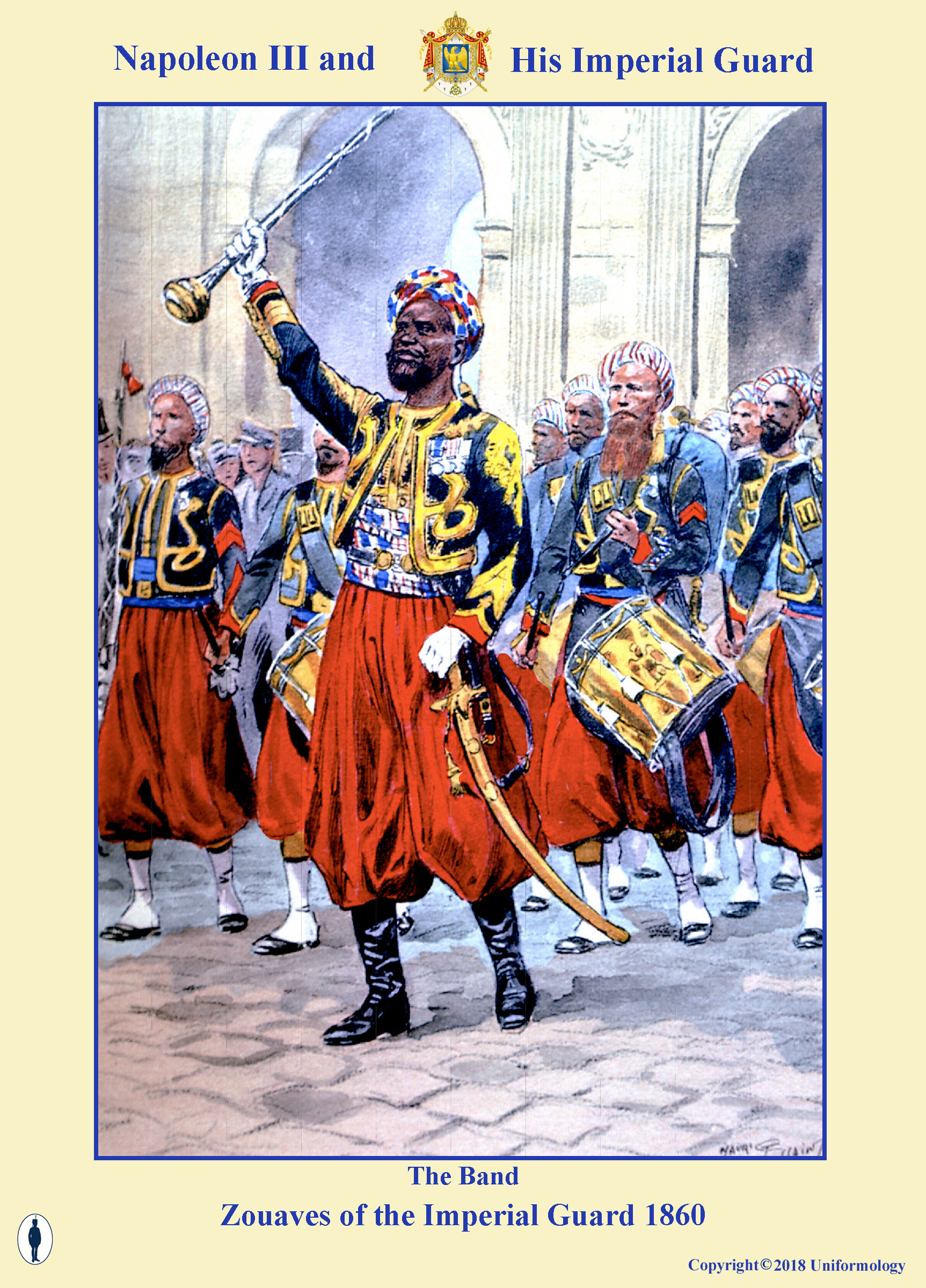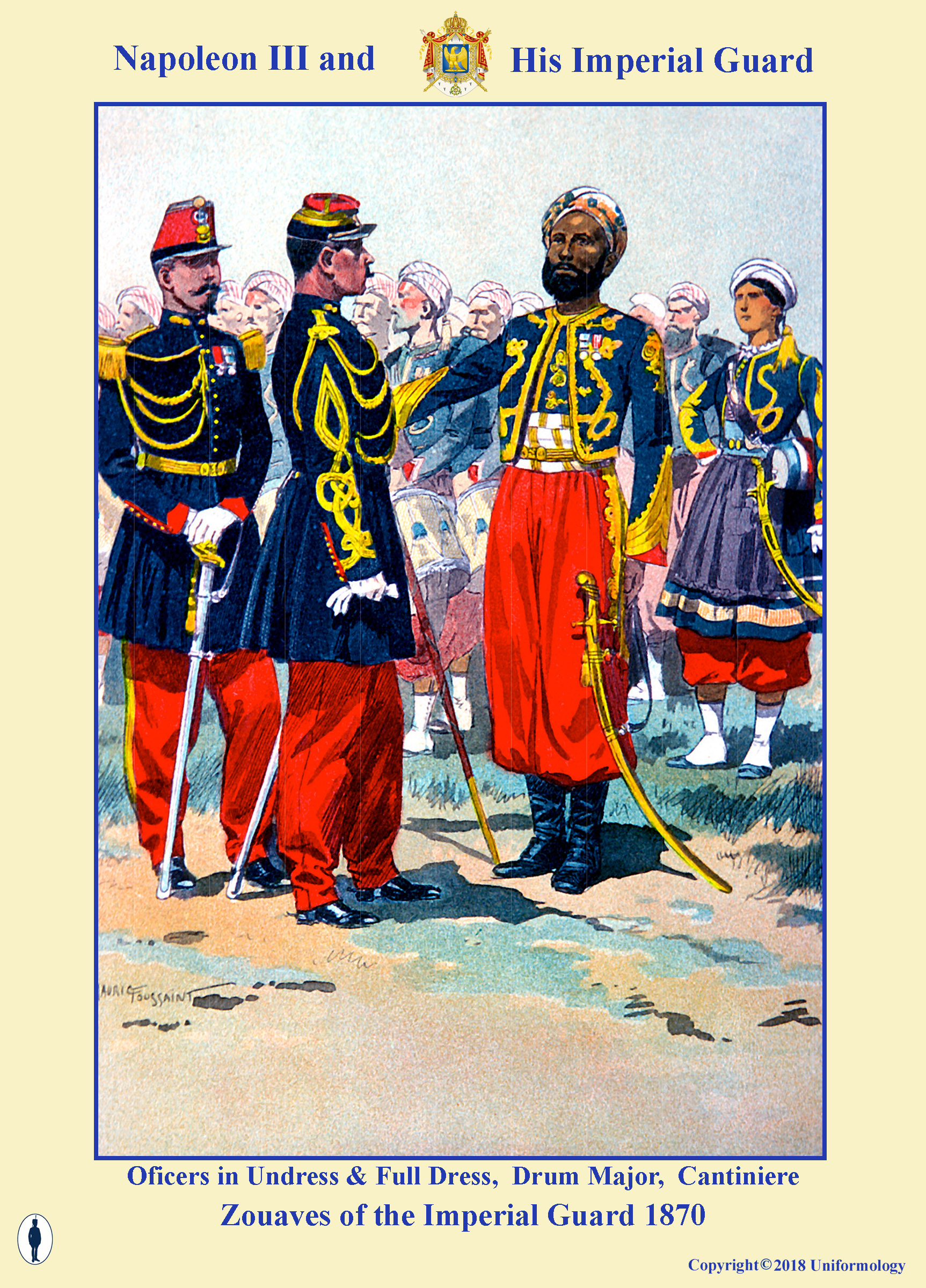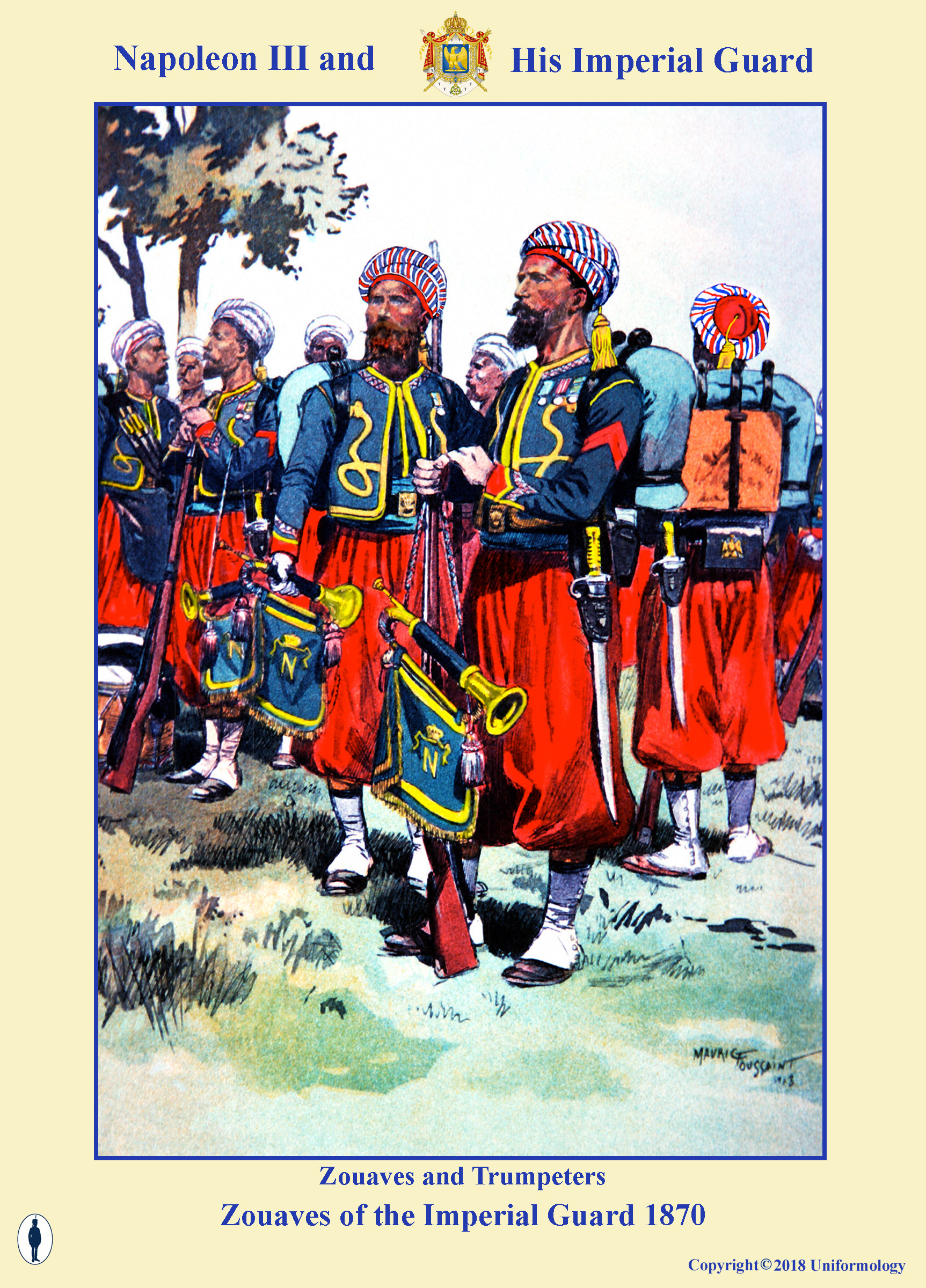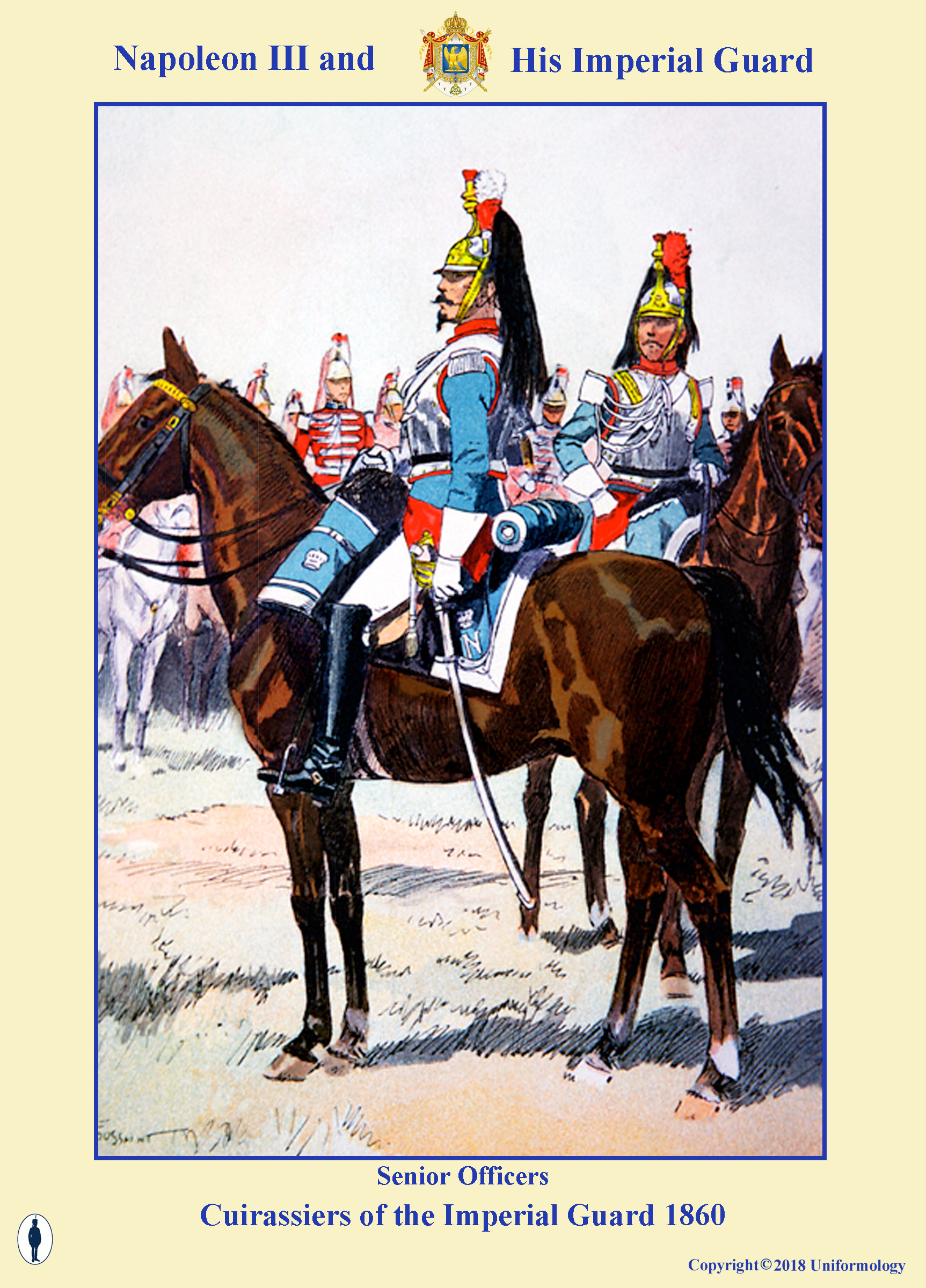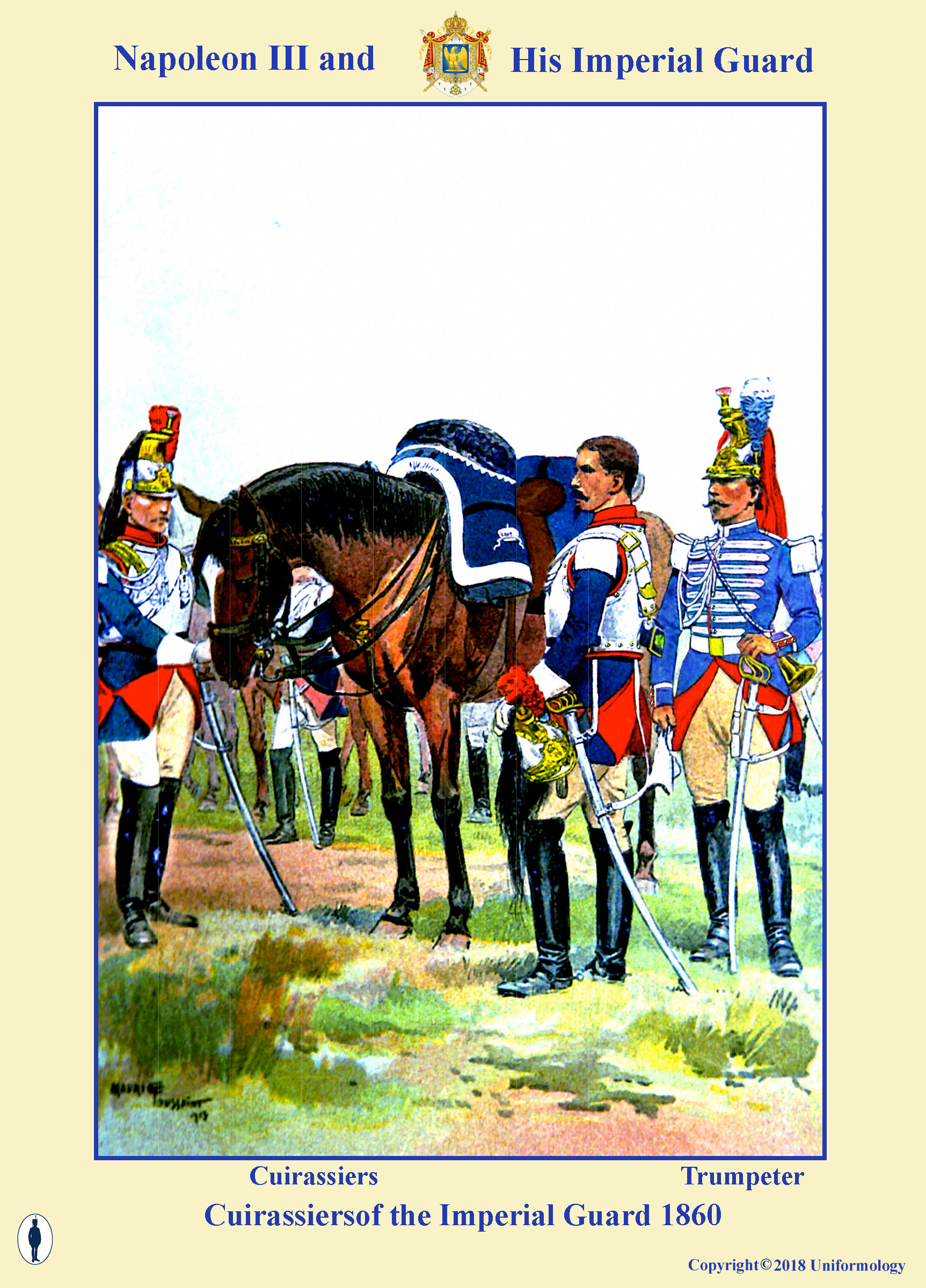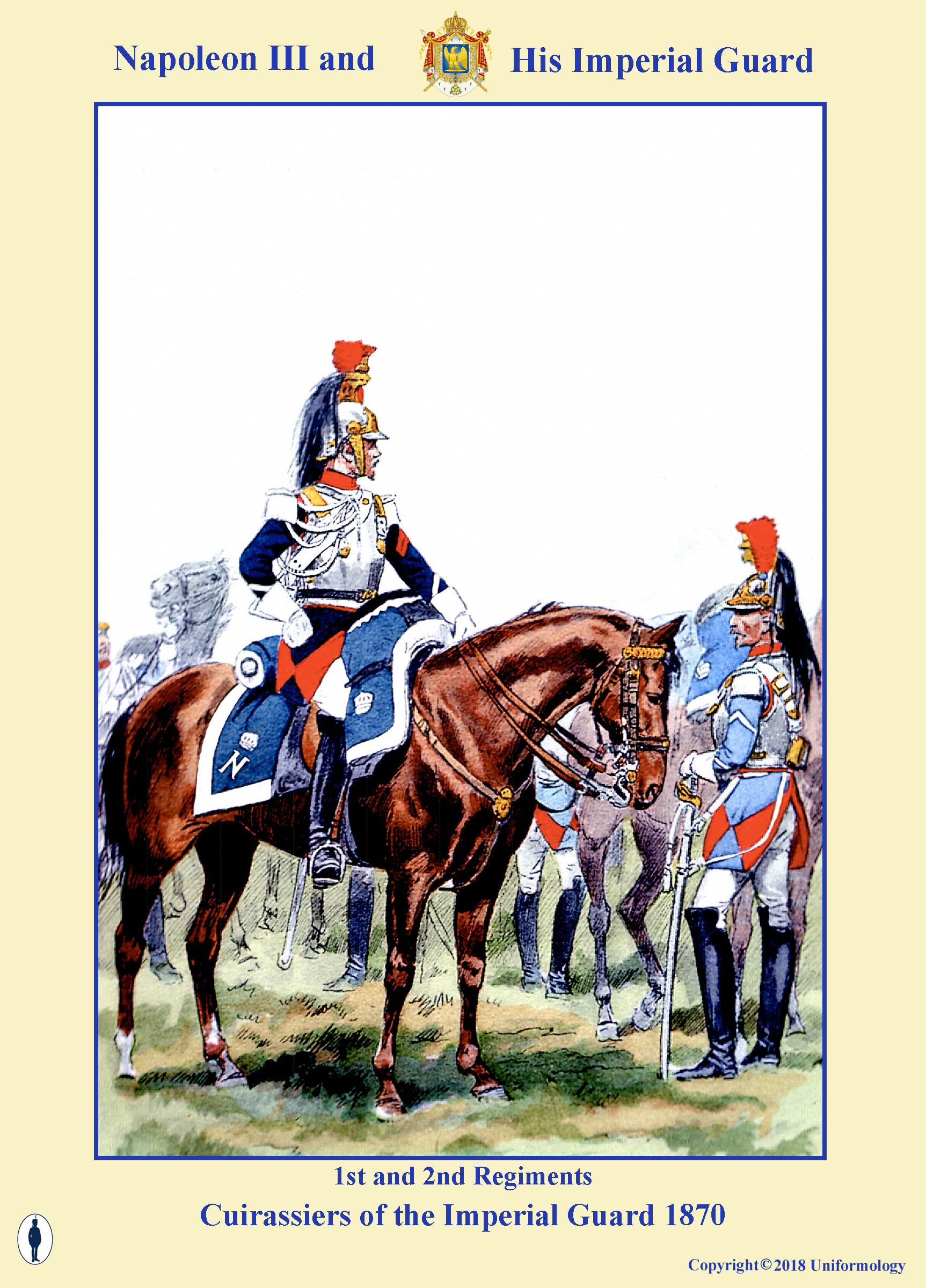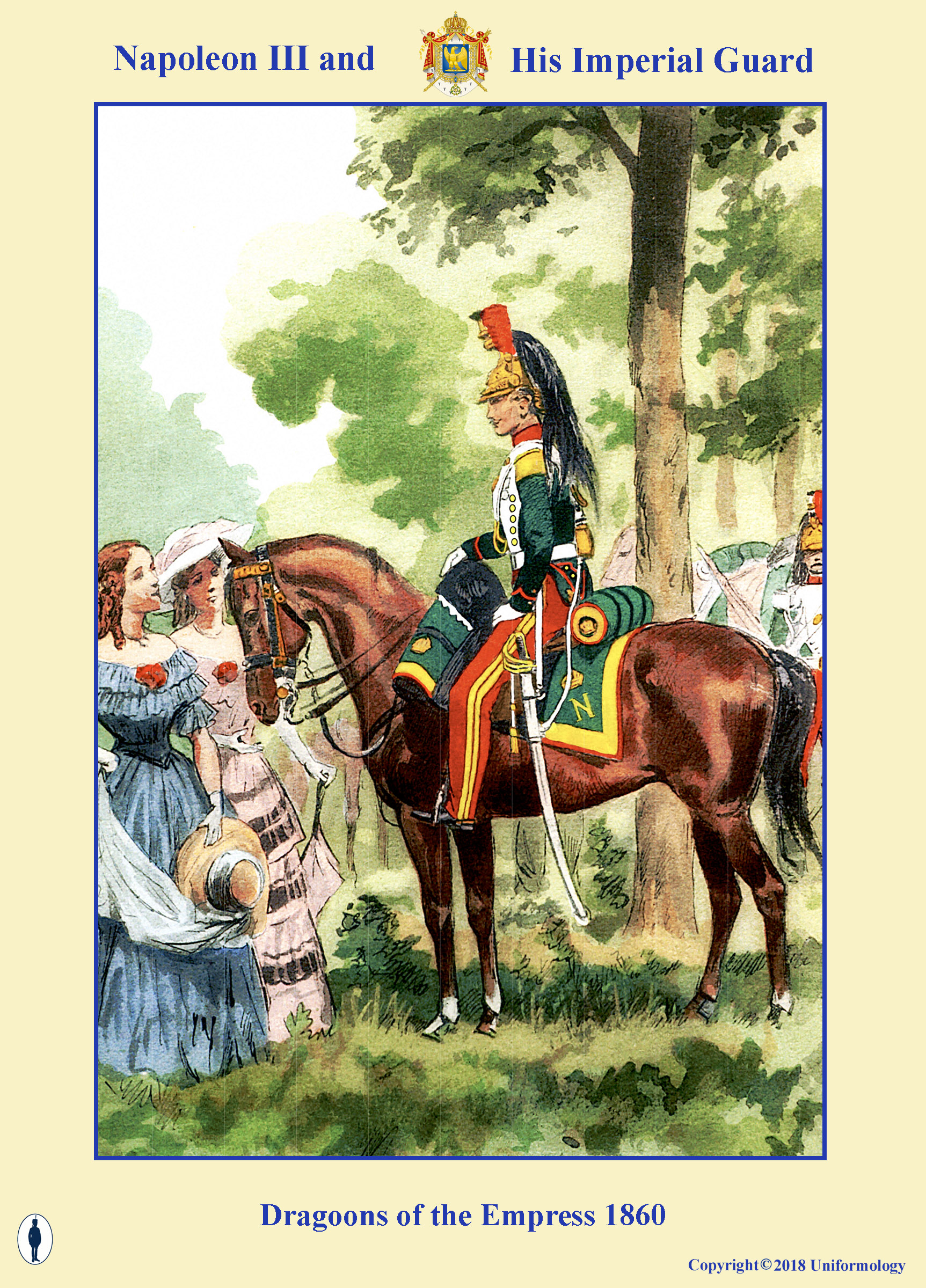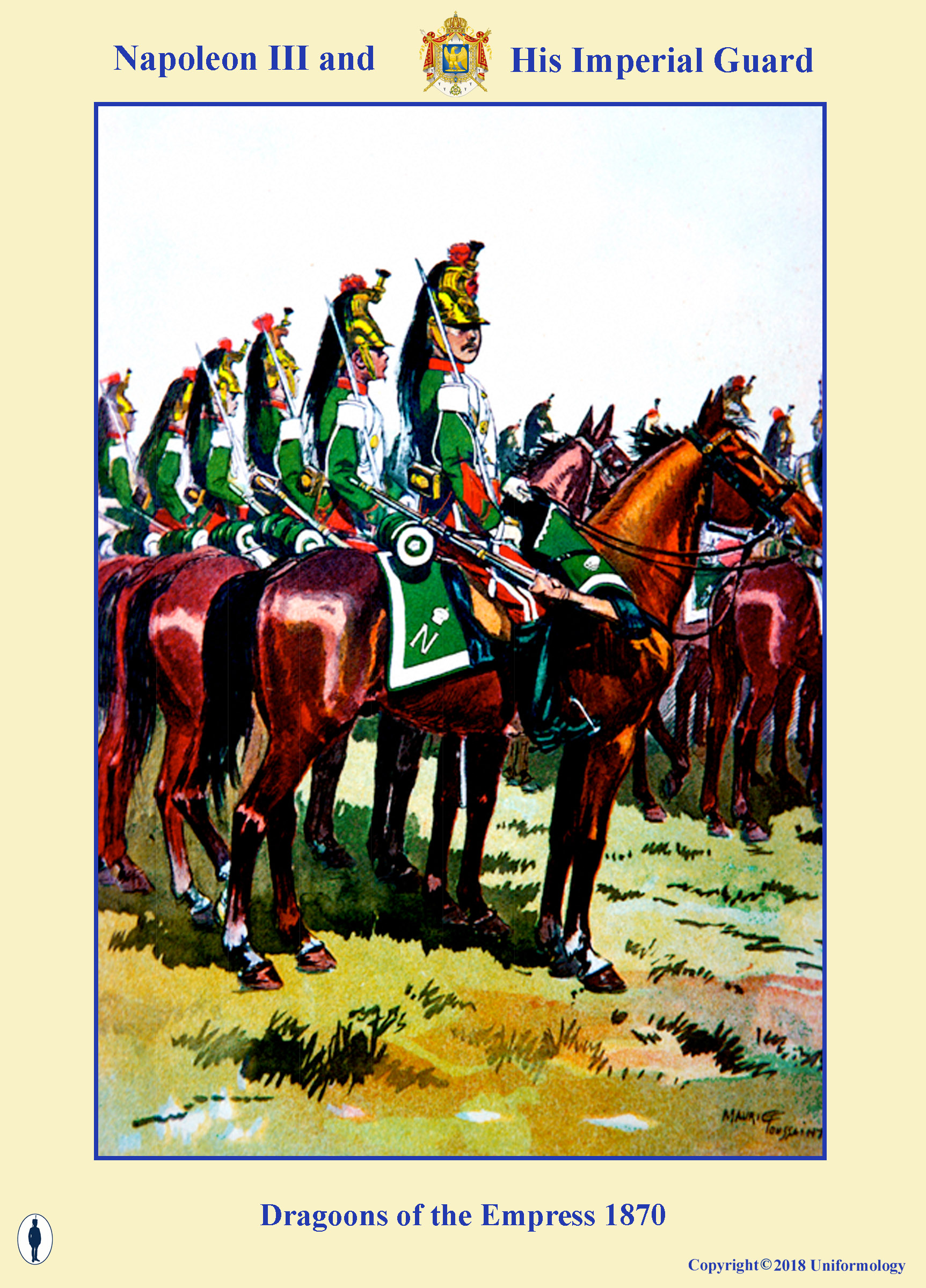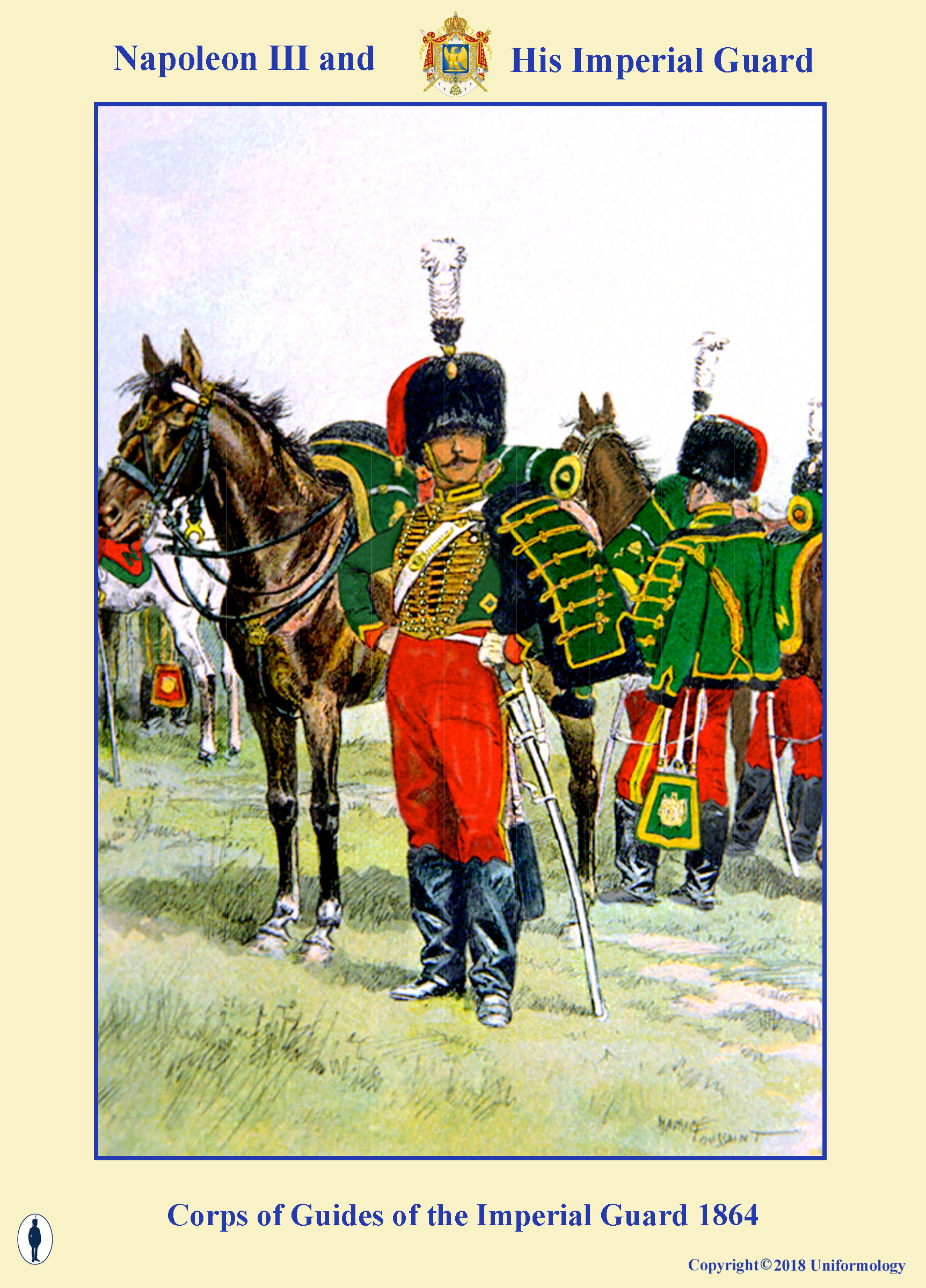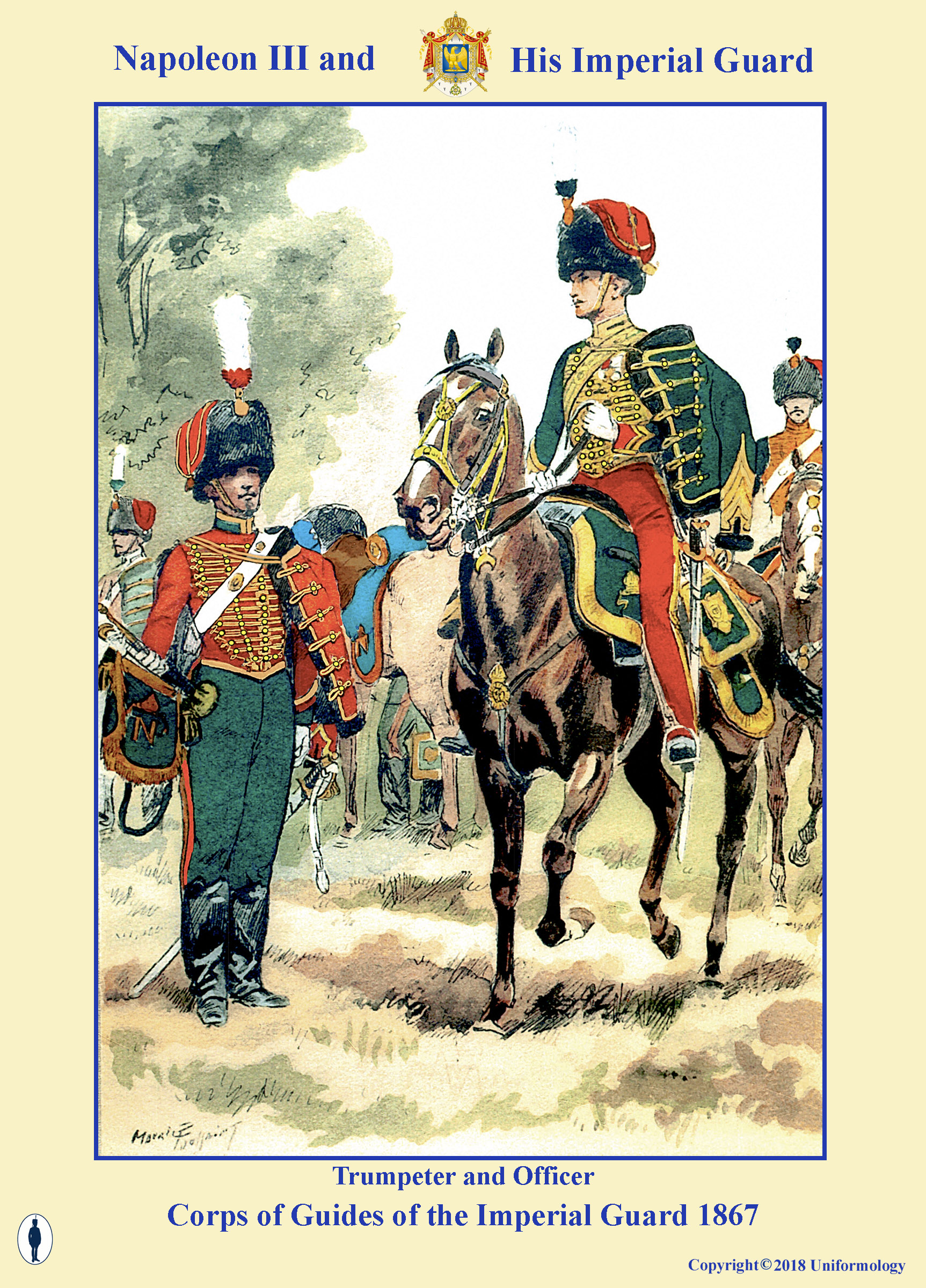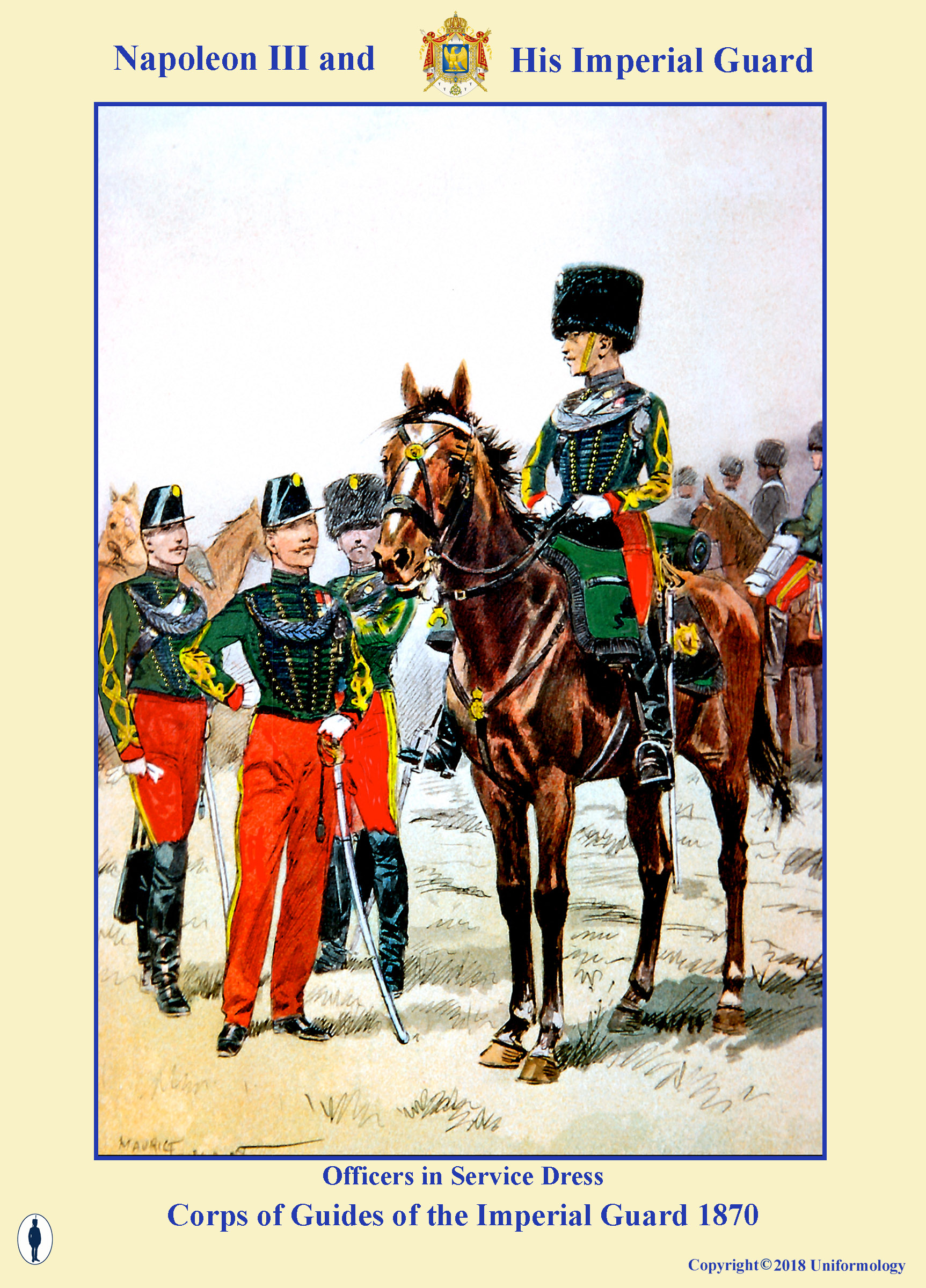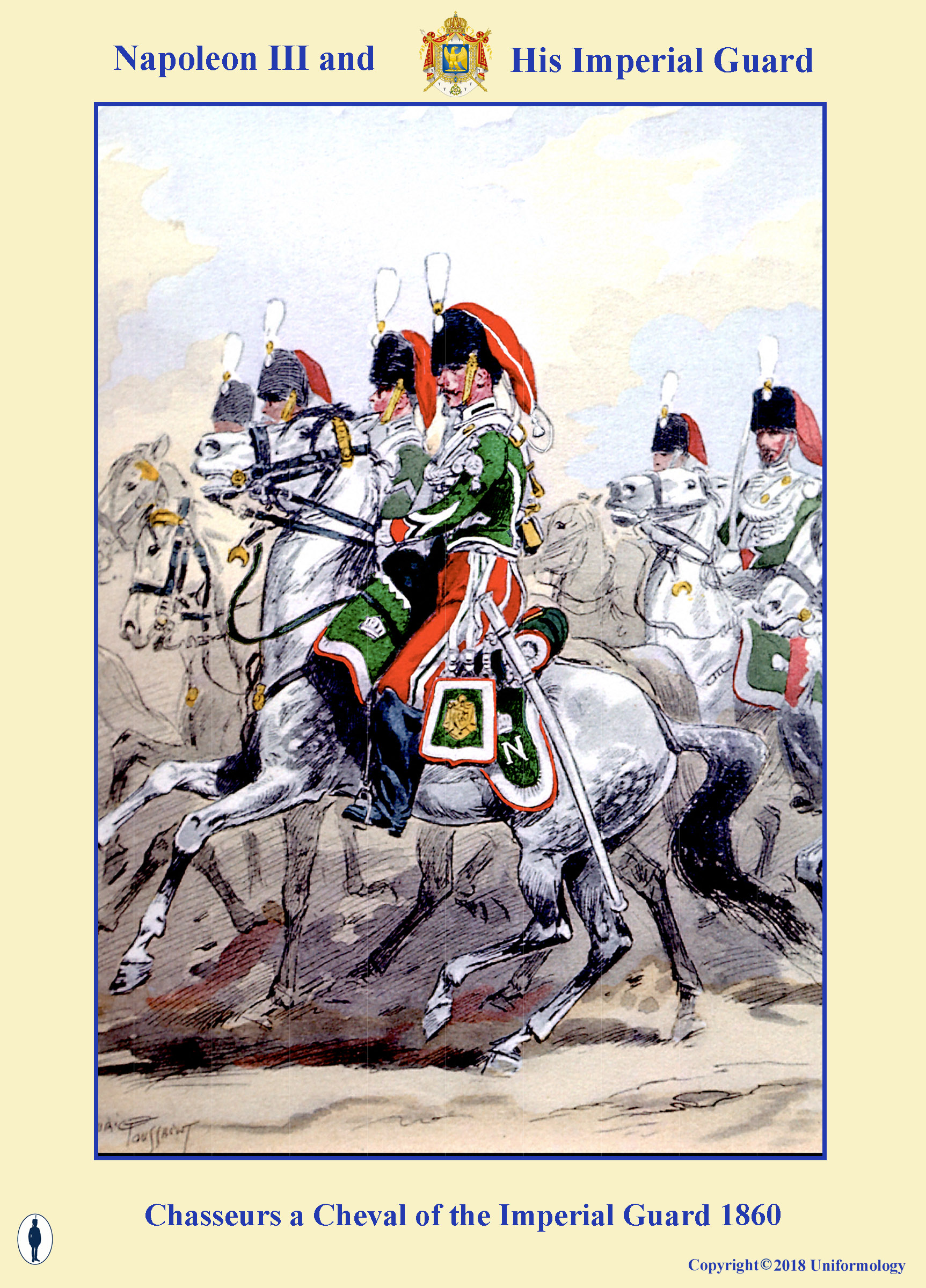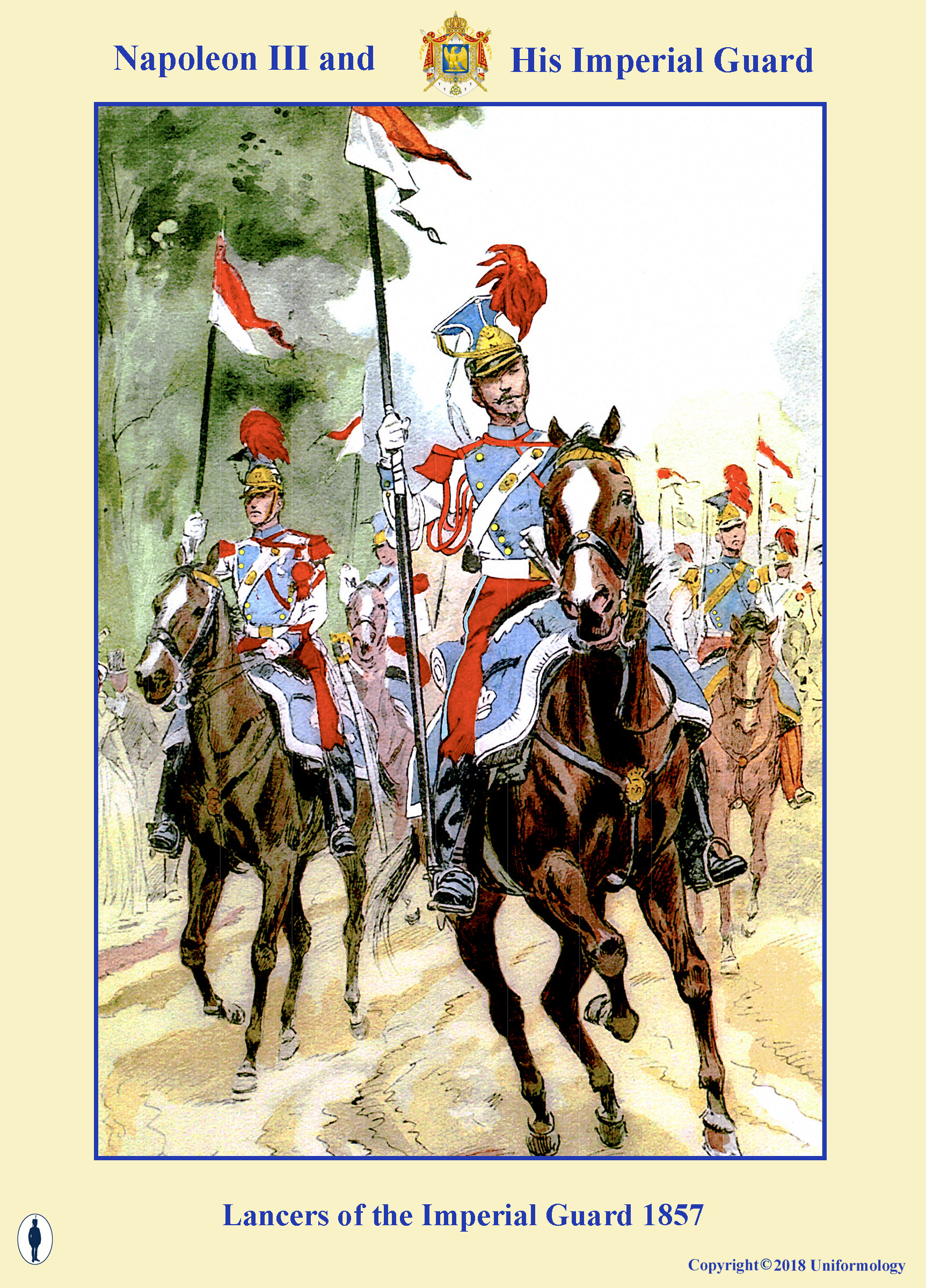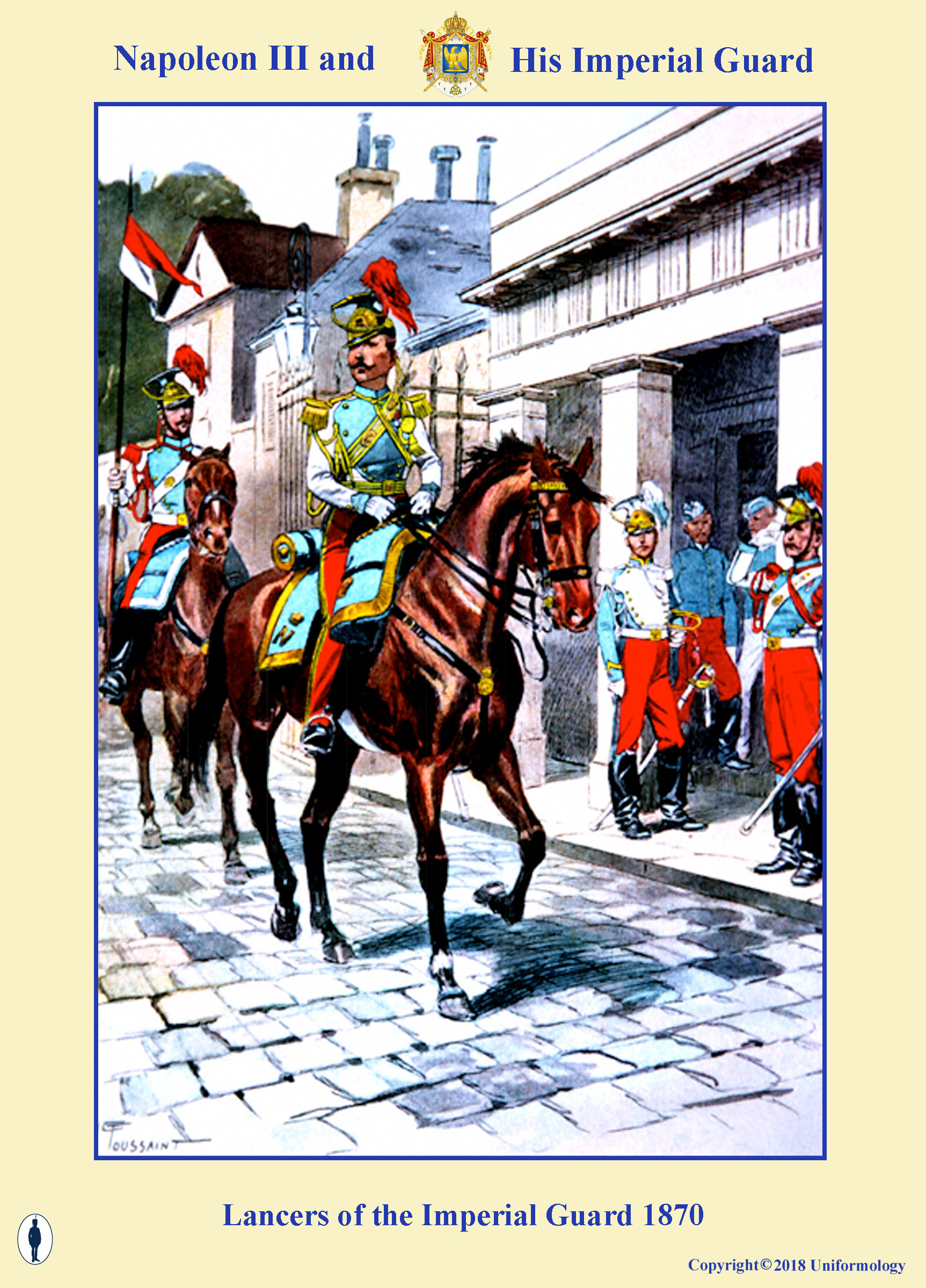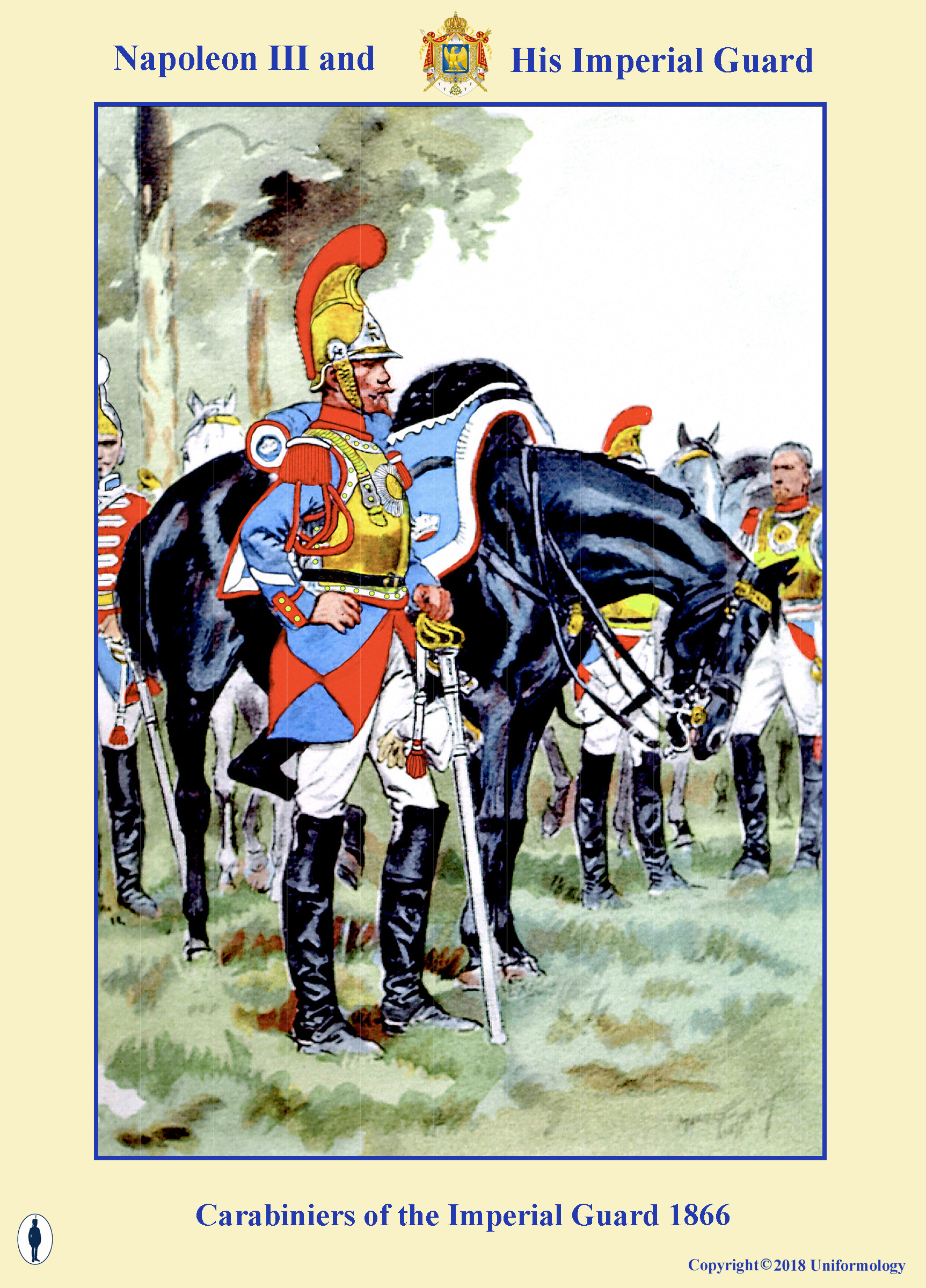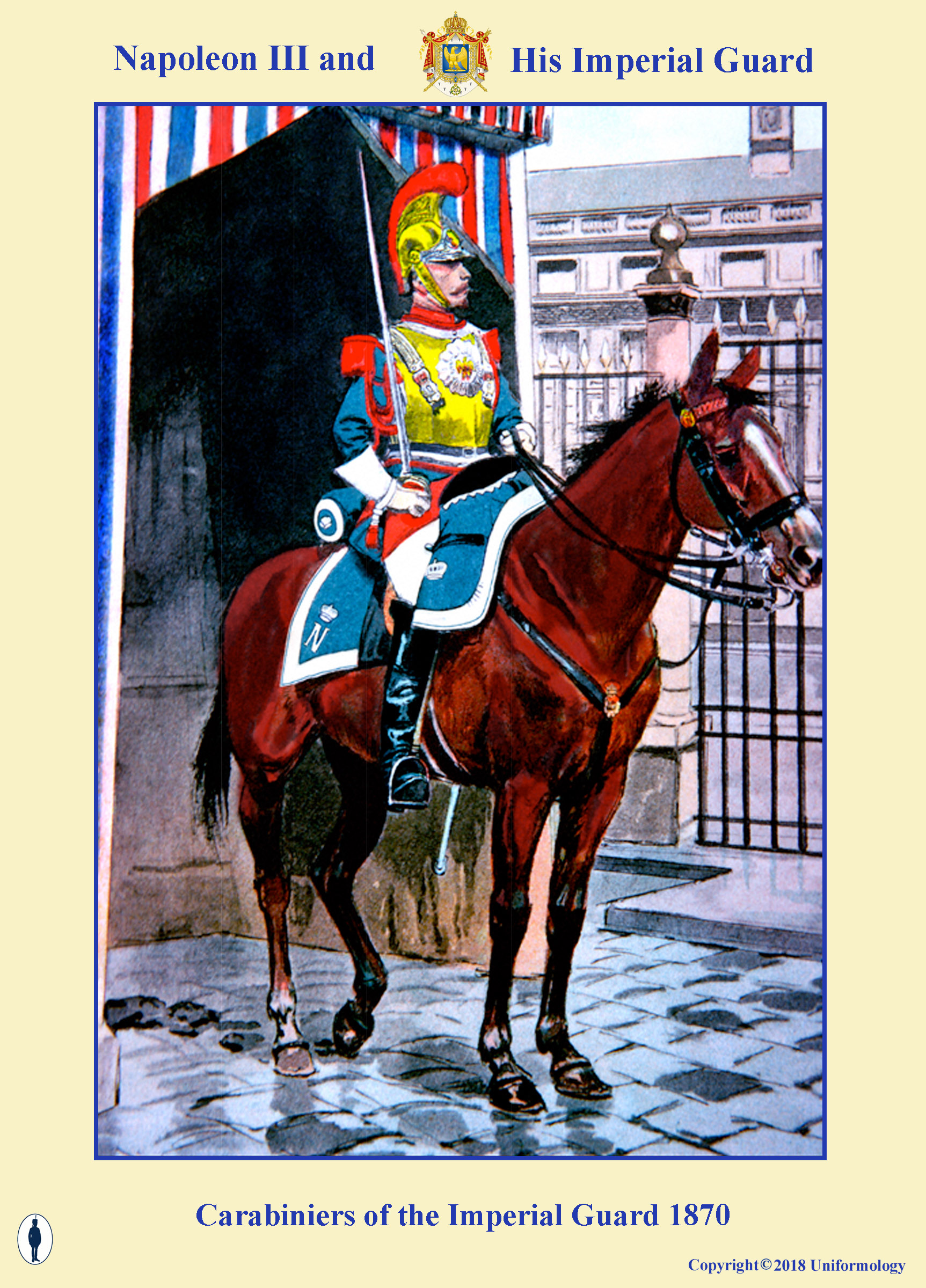THE WORLD OF MILITARY UNIFORMS
1660-1914
THE IMPERIAL GUARD OF
NAPOLEON III 1854-1870
By Maurice Toussaint
Page 2
COMING NEXT
ARTILLERY, ENGINEERS, GENDARMERIE
AND SUPPORT CORPS
Zouaves of the Guard
The Guard Zouaves were raised during the Crimean war from men of the other zouave units already engaged. The two battalions were immediately in action, storming the Malakoff Fort, where nearly half of them were killed. Along with their brothers in the Grenadiers they used the bayonet to disperse the Austrians at Magenta in 1859, gaining ten crosses of the Legion d’Honneur in the process. Their last combats were also with the 1st division at Rezonville in 1870. Their distinctive uniforms immediately set them apart with their red fezzes, blue vests and baggy red pants. Despite their North African native appearance, every man was a Frenchman.
Cuirassiers of the Guard
Although Napoleon I never included a cuirassier regiment in his guard, his nephew decided to mirror the line completely. The first regiment was raised in 1854 followed by a second in 1855. Both regiments were dressed the same except that the first wore a dark blue tunic and the second wore light blue. The facings were red and the tunic skirts were hooked back front and rear to show the red linings. White breeches and black high boots were worn and the helmet was of white metal with a black horsehair mane and red plume on the left side. The six squadrons were distinguished by a colored pompom at the base of the plume. 1st Dark Blue: 2nd Crimson: 3rd Green: 4th Light Blue: 5th Light Yellow: 6th Orange. In 1865 both regiments were amalgamated for economic reasons retaining the uniform of the first regiment. The Guard cavalry usually formed the reserve in the Crimea and Italy and given the nature of each campaign, saw little action. In 1870 at Rezonville however, the Cuirassiers made a valiant but fruitless attempt to prevent the Prussian advance, costing 200 of them their lives.
Dragoons of the Empress
Raised in 1855, this regiment was named in honor of its predecessor in 1857. They saw service in the Italian war of 1859 and charged at the battle of Mars-la-Tour in 1870 losing over 60 men. They were dressed similarly to the line dragoons with the exception of the white plastron on their green coatees. The facings were red with pointed cuffs piped red. Trumpeters wore reversed colors. The helmets were of brass and lacked the leopard skin turban worn in the line and carried a black horsehair mane with red plume on the left. The pompom colors were the same for each squadron as in the Cuirassiers.
The Corps of Guides
The Guides were formed as a headquarters squadron in 1848. Because of their special treatment and expensive mounts, a political situation arose which, in 1854 caused a delay in the reformation of the Guard. By the time they were incorporated into the Guard, they formed the core of the Guard’s light cavalry. Dressed almost identically to their illustrious forbears, the green jackets with yellow frogging and piping, red collar and pointed cuffs gave them an elite air. In full dress thy wore green pelisses trimmed with Canadian beaver fur and , despite the previous fuss, remained magnificently mounted. The headdress was the black sealskin colback with white plume and red, yellow trimmed bag. All yellow items were gold for officers who wore, for levees and gala occasions, red pantaloons with gold lace knots on the thighs and gold topped riding boots. Apart from some action in Italy at the battle of Solferino, they saw little action, but did escort the Emperor from Metz to Sedan, where he was taken prisoner.
Chasseurs of the Guard
Formed in the Crimea from the famed Chasseurs d’Afrique this regiment saw good service in that campaign. However, they subsequent campaign history saw them experience little action. They, along with most of the Guard, ended up in Metz in 1870. They were dressed as hussars with green jackets heavily frogged with white lace (silver for officers), and red pointed cuffs piped white. The headdress was the black sealskin colback with a long red tasseled bag hanging down over the left shoulder. The plume was white as was the lace on the colback bag and the pompoms at the base were red for men and of silver wire for officers. In undress, the bonnet de police was worn, later replaced by a black oilskin kepi with white pompom.
Lancers of the Guard
Raised along with the dragoons, the lancers shared a similar history as they were nearly always brigaded together. Dressed in the same fashion as the line lancers, they were nevertheless distinguished by the white coatees with pale blue facings and plastrons. Unfortunately, in the Italian war they were often mistaken for Austrians by their own troops with a number of casualties occurring. In response a light blue coatee was adopted for field and every day wear. In another unlucky irony, this time because of their caps, they were mistaken for Prussian uhlans at Mars-la-Tour by the very dragoons they had been brigaded with for over 15 years and a number were wounded!
Carabiniers of the Guard
The two regiments of Carabiniers of the line were amalgamated in 1865 and transferred to the Imperial Guard. The uniform remained the same except for the insignia on their helmets and within the stars on their brass cuirasses. The red pantaloons were replaced by white and the regiment remained distinguished by its high red crested helmet and pale blue coats. They saw no action while in the Guard.


